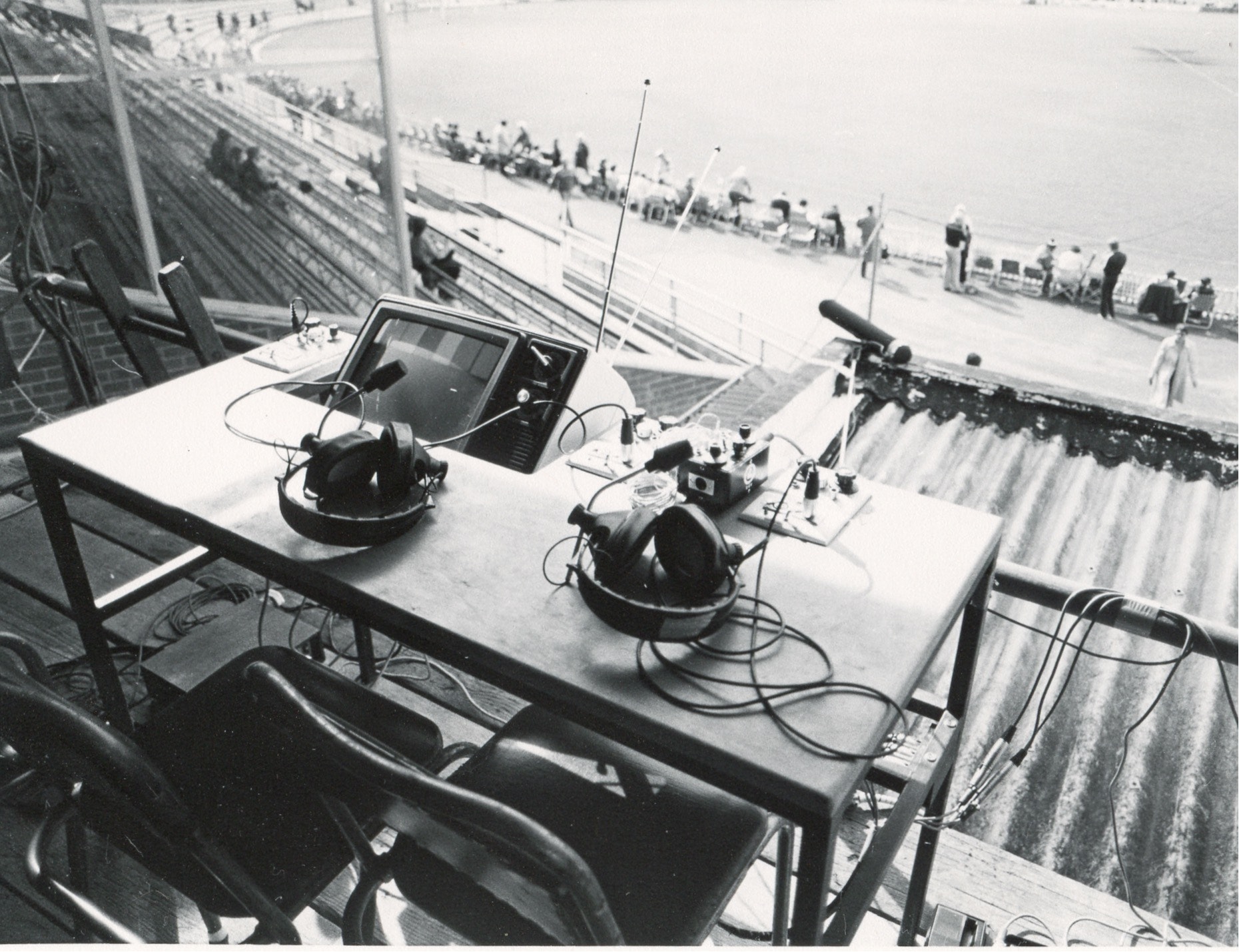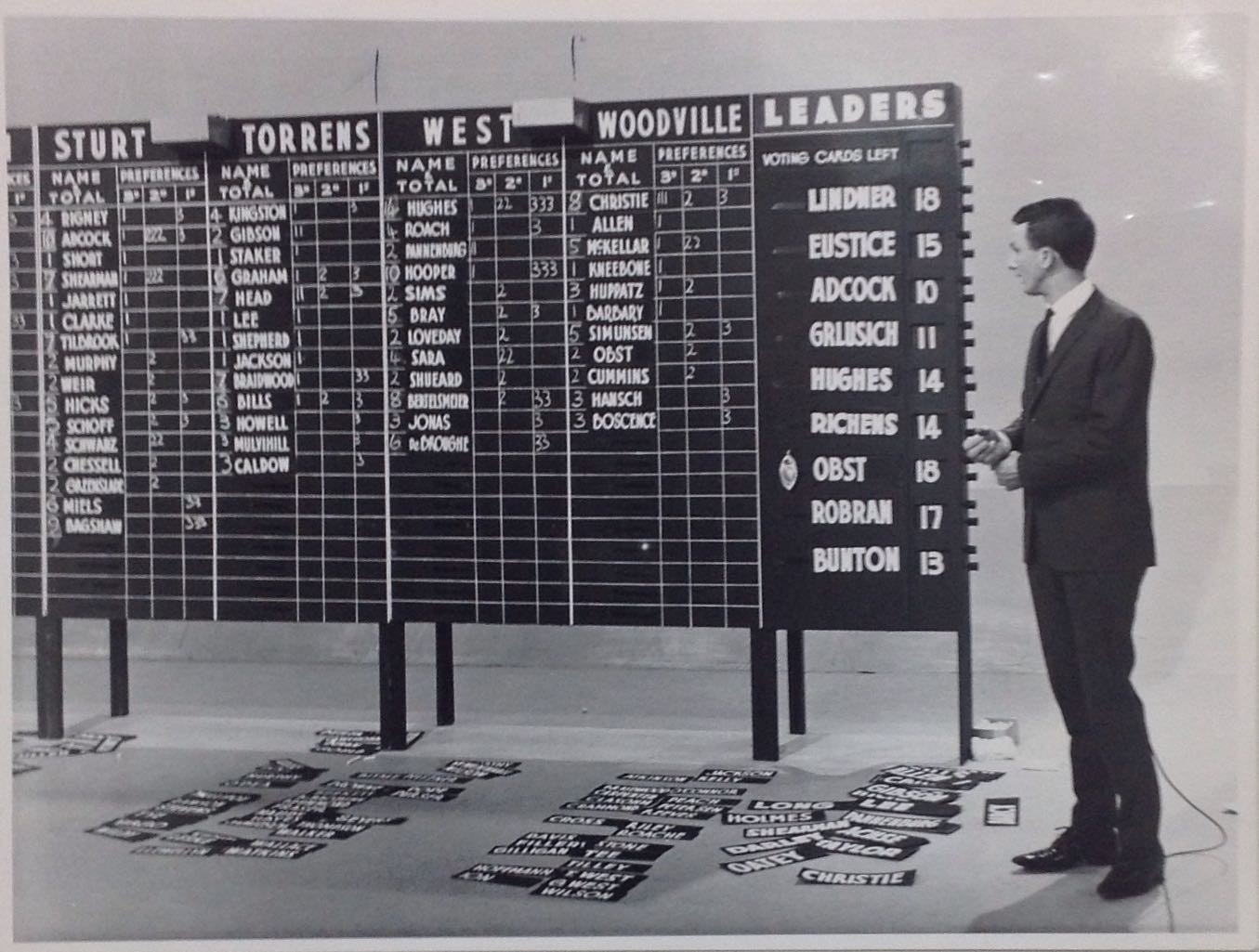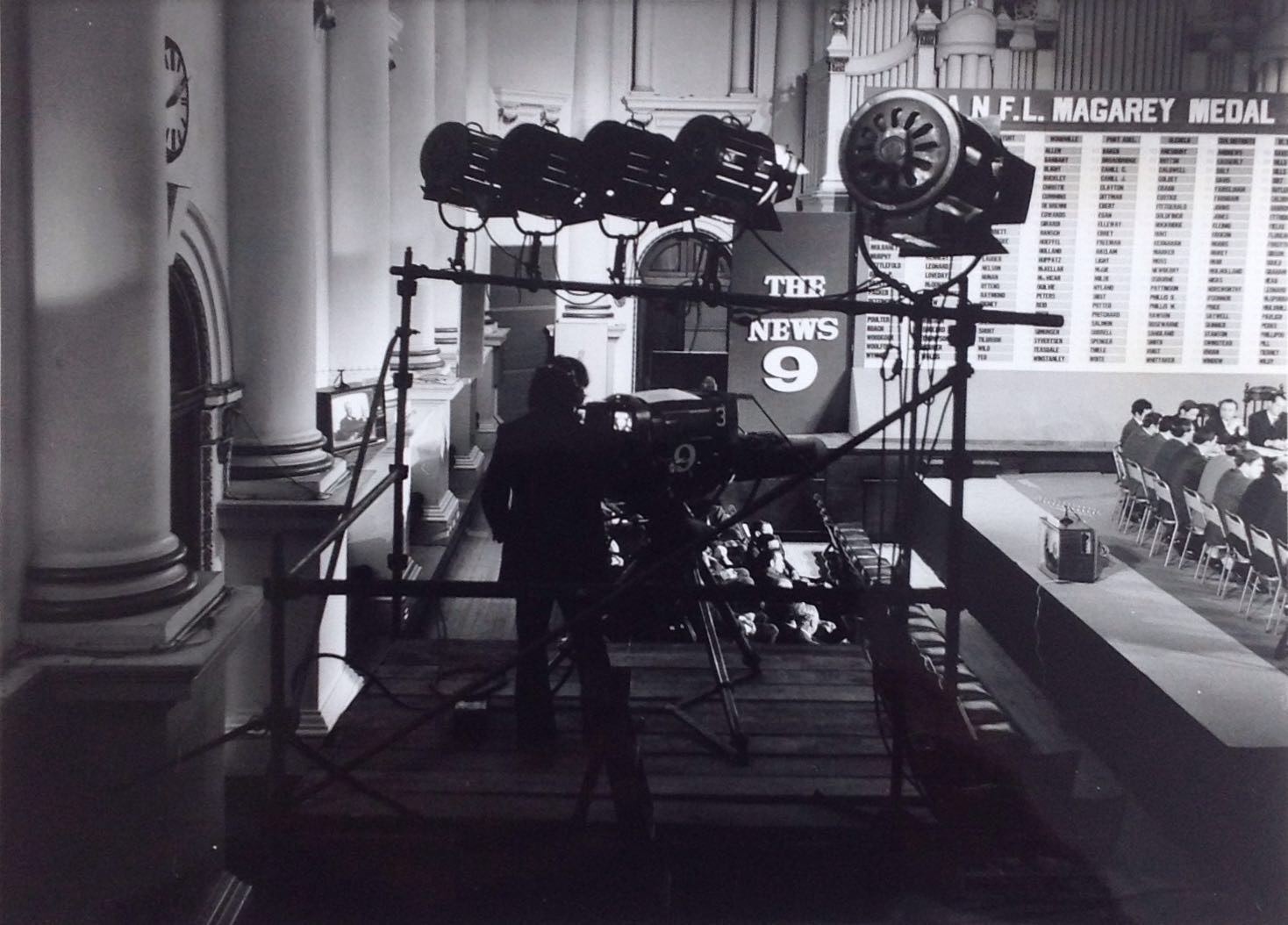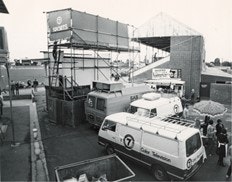
Footy and the Media
The commentary set up before a match at Alberton Oval in the early 1970s.
A personal reflection by Ron Kandelaars.
Yeah, you really got me now
You got me so I don’t know what I’m doin’, now—The Kinks
Like the Kinks, I was in a state of confusion about footy by the mid to late sixties. South Adelaide was on the wane and a new force was on the rise—the mighty Double Blues. Sturt’s legendary coach, Jack Oatey, had put together a formidable unit that would win five premierships on the trot, consistently beating the mob that had won too many—Port.
As a football obsessed kid, I had to know more about Adonis-like characters with marvellous monikers such as ‘Diamond Jim’ Tillbrook. Also in the team, a few quietly spoken trainee clergymen who certainly didn’t turn the other cheek on the footy field. Sturt was changing our Australian game forever with a radical handballing style and the check-side goalkicking wizardry of diminutive geniuses like Peter Endersbee. Some of this stuff you had to see to believe. Television arriving in the sixties meant that more of us could actually see it each weekend, as former camera operator and director, John Cronshaw, recalls:
We had three cameras on the football in those days. One was a wide-shot camera. The second camera was to pick up the close-ups of marks and ground play, and the third camera was used on the scoreboard because we didn’t have graphics generators then.
John also worked on the Sunday footy shows where many of the players who came into the studio were revered like gods in their suburban communities—but the remuneration was nothing like it is today:
They’re just names of the past now, most of those fellas. Gave it their all. There wasn’t much money to be made in football. A guy would come into the studio, and he’d win a bucket of Kentucky Fried Chicken (laughs) as the player of the day.
In the seventies, Eldon Crouch often compered the live Magarey Medal coverage, when the competition between television stations to get the first interview with the winner was intense. Eldon was Nine’s sports editor at the time, and he remembers ‘kidnapping’ the great Barrie Robran for an interview after his second medal win:
We got him away from Channel Seven. Seven had the TV rights from memory. I managed to get Barrie to come with me. Barrie was so shy back in those days and he knew me very well. Seven were very upset about it.
For the Kandelaars boys, this TV caper was a real winner. We could watch the reserves in the morning and by Saturday night, the Big Replay was ready to roll as John Cronshaw, recalls:
In the early days we would show the reserves live but the replay of the league game would be transmitted from the suburban ground—bounced from Mount Lofty to the station—and recorded on two-inch tape. Segments containing the best bits of the game would be shown in a 48-minute package in the evening. I think the TV coverage started in about ‘64. In fact, I remember one state game from Adelaide Oval between SA and Victoria. We had a DC3 plane circling near Mount Gambier bouncing pictures from Adelaide to Melbourne. Back then, all this TV coverage was pioneering stuff. It was all pretty exciting because it was all new.

The 1967 Magarey Medal count television broadcast with presenter Michael Peterson.
As the Kandelaars brothers sat glued to the telly on Saturday nights, I couldn’t get enough of the great Barrie Robran, who would glide across Prospect Oval, weaving his magic and confounding his opponents. There was no-one quite like the famous number 10 in the red and white Rooster’s guernsey.
You can now see ‘Bazz’ in colour thanks to the relentless push over the years to enhance footy coverage with better technology. Electronics company, Marconi, loaned cameras to Channel Nine in 1972 as the station prepared for colour and they captured that year’s Grand Final in the most vivid way. It never went to air but former cameraman and director, Rob Fletcher preserved the tapes. He also remembers the battle for footy coverage rights:
Nine had the sole rights in 1972, 1972 and 1974. Then colour came in and three stations, Nine, Seven and the ABC, did it. After that, it went to Channel Seven. And then it went back to Nine in 1980 and 1981.
Nine went out and bought eight one-inch machines in the eighties in one hit—a graphic unit and a heap of other stuff. Basically they got them because the Americans boycotted the Russian Olympics, so there was a surplus of equipment. One-inch machines meant you could do slow-mo replays. It also had a graphic stick in it so you didn’t have to shoot the scoreboard anymore, and you could put player names up on screen. It was actually good fun. We were always so busy you didn’t have time to complain—it was head-down-bum-up.
The highlights of the sixties and seventies rolled on into the eighties, when the prospect of Adelaide teams entering the AFL behemoth loomed large. Perhaps “you don’t always get what you want” but “you get what you need”. Still, for many of us, love runs deep for the glory days and a truly local competition.

Channel Nine’s set up at the Adelaide Town Hall for the 1970 count.








